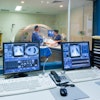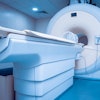The combination of MRI and ultrasound can improve accuracy in detecting and diagnosing prostate cancer, according to a study presented at this week's American Roentgen Ray Society (ARRS) meeting in Toronto.
Researchers from State University of New York (SUNY) Upstate Medical University used multiparametric MRI and subsequent fusion of MR images with ultrasound for targeted biopsy of high-suspicion foci.
Lead author Dr. Sajeev Ezhapilli said the two modalities can help overcome the challenge of differentiating a clinically significant cancer from inactive ones. The detection of hidden lesions directly affects patient management and can influence outcome, he added.
The multiparametric MRI approach combines several sequences, including T2-weighted dynamic contrast-enhanced (DCE) scans and diffusion-weighted imaging (DWI), to determine high-suspicion foci for transrectal ultrasound-guided biopsy.
"In patients on active surveillance for low-risk cancer, multiparametric MRI can better characterize the prostate gland and find occult foci of higher-grade disease," the authors wrote in a study abstract.
The ability to perform the procedure safely in an outpatient setting is among the advantages of using the ultrasound/MRI fusion biopsy technique, Ezhapilli and colleagues added.


.fFmgij6Hin.png?auto=compress%2Cformat&fit=crop&h=100&q=70&w=100)





.fFmgij6Hin.png?auto=compress%2Cformat&fit=crop&h=167&q=70&w=250)











